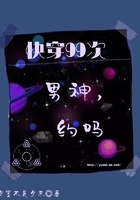It will be remembered that Indra, in his abject terror when he fled after the slaying of Vrittra, also revealed his mystic name. In North America the same story of the trapping and laming of the sun is told, and attributed to a hero named Tcha-ka-betch. In Samoa the sun had a child by a Samoan woman. He trapped the sun with a rope made of a vine and extorted presents. Another Samoan lassoed the sun and made him promise to move more slowly. These Samoan and Australian fancies are nearly as dignified as the tale in the Aitareya Brahmana. The gods, afraid "that the sun would fall out of heaven, pulled him up and tied him with five ropes". These ropes are recognised as verses in the ritual, but probably the ritual is later than the ropes. In Mexico we find that the sun himself (like the stars in most myths) was once a human or pre-human devotee, Nanahuatzin, who leapt into a fire to propitiate the gods. Translated to heaven as the sun, Nanahuatzin burned so very fiercely that he threatened to reduce the world to a cinder.
Arrows were therefore shot at him, and this punishment had as happy an effect as the beatings administered by Maui and Tcha-ka-betch.
Among the Bushmen of South Africa the sun was once a man, from whose armpit a limited amount of light was radiated round his hut.
Some children threw him up into the sky, and there he stuck, and there he shines. In the Homeric hymn to Helios, as Mr. Max Muller observes, "the poet looks on Helios as a half god, almost a hero, who had once lived on earth," which is precisely the view of the Bushmen. Among the Aztecs the sun is said to have been attacked by a hunter and grievously wounded by his arrows. The Gallinomeros, in Central California, seem at least to know that the sun is material and impersonal. They say that when all was dark in the beginning, the animals were constantly jostling each other.
After a painful encounter, the hawk and the coyote collected two balls of inflammable substance; the hawk (Indra was occasionally a hawk) flew up with them into heaven, and lighted them with sparks from a flint. There they gave light as sun and moon. This is an exception to the general rule that the heavenly bodies are regarded as persons. The Melanesian tale of the bringing of night is a curious contrast to the Mexican, Maori, Australian and American Indian stories which we have quoted. In Melanesia, as in Australia, the days were long, indeed endless, and people grew tired; but instead of sending the sun down below by an incantation when night would follow in course of nature, the Melanesian hero went to Night (conceived of as a person) and begged his assistance.
Night (Qong) received Qat (the hero) kindly, darkened his eyes, gave him sleep, and, in twelve hours or so, crept up from the horizon and sent the sun crawling to the west. In the same spirit Paracelsus is said to have attributed night, not to the absence of the sun, but to the apparition of certain stars which radiate darkness. It is extraordinary that a myth like the Melanesian should occur in Brazil. There was endless day till some one married a girl whose father "the great serpent," was the owner of night. The father sent night bottled up in a gourd. The gourd was not to be uncorked till the messengers reached the bride, but they, in their curiosity, opened the gourd, and let night out prematurely.
Taylor, New Zealand, p. 131.
Turner, Samoa, p. 20.
Sahagun, French trans., vii. ii.
Bleck, Hottentot Fables, p. 67; Bushman Folk-Lore, pp. 9, 11.
Compare a Californian solar myth: Bancroft, iii. pp. 85, 86.
Bancroft, iii. 73, quoting Burgoa, i. 128, 196.
Codrington, Journ. Anthrop. Inst., February, 1881.
Contes Indiens du Bresil, pp. 1-9, by Couto de Magalhaes. Rio de Janeiro, 1883. M. Henri Gaidoz kindly presented the author with this work.
The myths which have been reported deal mainly with the sun as a person who shines, and at fixed intervals disappears. His relations with the moon are much more complicated, and are the subject of endless stories, all explaining in a romantic fashion why the moon waxes and wanes, whence come her spots, why she is eclipsed, all starting from the premise that sun and moon are persons with human parts and passions. Sometimes the moon is a man, sometimes a woman and the sex of the sun varies according to the fancy of the narrators. Different tribes of the same race, as among the Australians, have different views of the sex of moon and sun. Among the aborigines of Victoria, the moon, like the sun among the Bushmen, was a black fellow before he went up into the sky. After an unusually savage career, he was killed with a stone hatchet by the wives of the eagle, and now he shines in the heavens. Another myth explanatory of the moon's phases was found by Mr. Meyer in 1846 among the natives of Encounter Bay.
According to them the moon is a woman, and a bad woman to boot.
She lives a life of dissipation among men, which makes her consumptive, and she wastes away till they drive her from their company. While she is in retreat, she lives on nourishing roots, becomes quite plump, resumes her gay career, and again wastes away.
The same tribe, strangely enough, think that the sun also is a woman. Every night she descends among the dead, who stand in double lines to greet her and let her pass. She has a lover among the dead, who has presented her with a red kangaroo skin, and in this she appears at her rising. Such is the view of rosy-fingered Dawn entertained by the blacks of Encounter Bay. In South America, among the Muyscas of Bogota, the moon, Huythaca, is the malevolent wife of the child of the sun; she was a woman before her husband banished her to the fields of space. The moon is a man among the Khasias of the Himalaya, and he was guilty of the unpardonable offence of admiring his mother-in-law. As a general rule, the mother-in-law is not even to be spoken to by the savage son-in-law.














